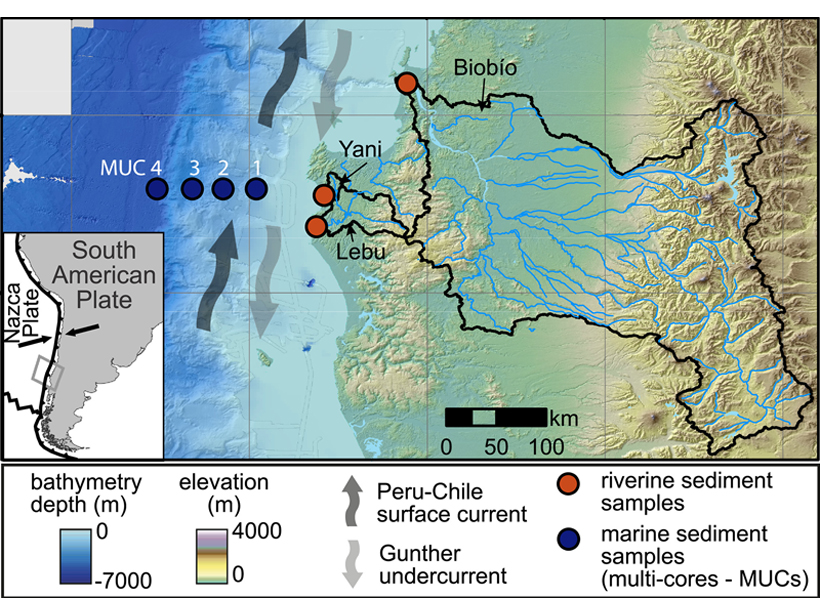Source: Geophysical Research Letters
Reverse weathering refers to the formation of marine clay minerals, a still poorly understood geochemical process. Whereas on land clays form by silicate weathering, in the oceans clay can form in place, called authigenic clays, through chemical reactions between biogenic silica and aqueous cations with the bicarbonate dissolved in seawater.
Because the authigenic formation of clays in seawater removes alkaline metals derived from land and bicarbonate formed in the oceans, understanding reverse weathering can help to constrain the chemical mass balance between rivers and oceans. Furthermore, since authigenic clay formation in the oceans also releases carbon dioxide, reverse weathering impacts long-term changes in atmospheric carbon dioxide concentration. Until now, there has been no clear way to quantify the amount of clay minerals formed in the ocean.
Bernhardt et al. [2020] have discovered that the orders of magnitude difference in 10Be/9Be ratios between continental Be and Be dissolved in seawater allows for the beryllium-isotope system to be used to sensitively track even small fractions (less than 2 percent) of marine clay minerals in sea sediments. The results will ultimately improve our understanding of reverse weathering globally and impacts on long-term (past approximately 13 million years) atmospheric carbon dioxide levels.
Citation: Bernhardt, A., Oelze, M., Bouchez, J., von Blanckenburg, F., Mohtadi, M., Christl, M., & Wittmann, H. [2020]. 10Be/ 9Be ratios reveal marine authigenic clay formation. Geophysical Research Letters, 47, e2019GL086061. https://doi.org/10.1029/2019GL086061
—Steven D. Jacobsen, Editor, Geophysical Research Letters
Text © 2020. The authors. CC BY-NC-ND 3.0
Except where otherwise noted, images are subject to copyright. Any reuse without express permission from the copyright owner is prohibited.

